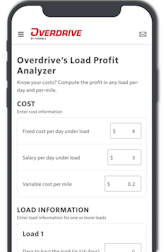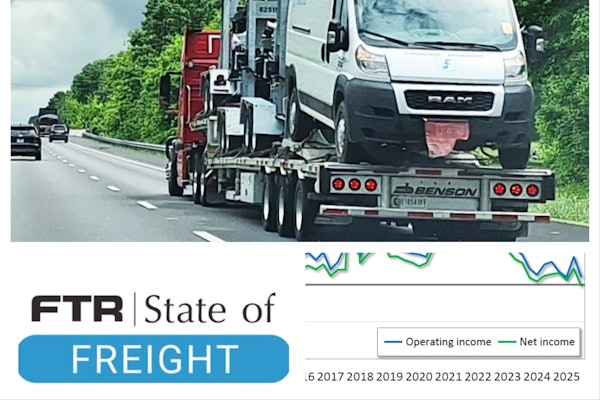While the debate over broker transparency rages and FMCSA plans action on that front (possible as soon as three months from now), DAT Chief of Analytics Ken Adamo might have just handed over the goods -- partially, anyway.
Of course, DAT or Adamo can't make FMCSA or anyone enforce 371.3, the regulation at the heart of the debate, which promises parties to a brokered transaction the "right to review the record of the transaction," including the "amount of compensation received by the broker for the brokerage service performed and the name of the payer."
FMCSA only on exceedingly rare occasions involving some element of fraud or nonpayment actually compels brokers to abide by this regulation, and the world of freight middlemen regards it as outdated and beside the point.
But for many carriers, it's a reg on the books that says brokers must provide them actionable business intelligence. In Overdrive surveying on the subject, 75% of carriers said they wanted to see shippers' rates and brokers' margins to better negotiate and avoid being overcharged.
However, enforcing this, Adamo noted, would pose serious challenges.
"Carriers have a very valid point" demanding broker transparency, Adamo said. "After transaction settled and bill cut, if it's determined legally, they should get access" to the shipper's rate under the regs on the books.

[Related: Why brokers don't want to give owner-ops transparency in freight transactions]
That data, however, would likely be about three weeks old. About a fifth of Overdrive survey respondents noted a use of such dated information to avoid a broker who's revealed to keep an excessive margin. A small percentage of respondents, at once, admitted not knowing what to do with the information.
Adamo pointed out that brokers regularly prohibit carriers from back soliciting shippers anyway, so what's an owner-op to do with rates data from three weeks ago when the market moves so quickly?
"What the broker charged the shipper in an aggregate basis is irrelevant to a single load being picked up today," said Adamo. But DAT does collect data from thousands of brokers and shippers that does contain the amount the shipper paid. Adamo frequently reports on broker margins, even going as far as to produce a white paper with a map of which states see the highest broker margins.
Overdrive asked Adamo if this data could be used to show carriers the shipper rate on a load or lane, essentially providing some measure of "broker transparency."
 Adamo's chart shows how much brokers pay for a truck vs. how much shippers pay brokers for a truck. Take the difference, and there's your implied margin, mapped on the right of the image.Ken Adamo
Adamo's chart shows how much brokers pay for a truck vs. how much shippers pay brokers for a truck. Take the difference, and there's your implied margin, mapped on the right of the image.Ken Adamo
"It turns out that we are able to do this and the results are, unsurprising to most, very similar to the results of a discrete margin analysis with broker submitted data," Adamo responded in a recent LinkedIn post. "This chart shows the national average dry van shipper buy rates when using brokers compared to broker buy rates. The shaded background is the implied gross margin. I only used domestic loads over 250 miles."
Of course, this data only shows an average of national average van rates, far from the transaction-specific "what the shipper paid the broker" information carriers could readily leverage in negotiations and broker-selection decisions, but it's a start.
Adamo said that with so much customer interest in margins, "our product teams are seeing how to build the margin data into the app."
As for now, he sees it as more of a "high-margin lane vs. low-margin lane" indicator the app could display, though he's still unsure of the use case for carriers.
In any case, Adamo's work on exposing broker margins represents on of the only private-sector attempts to provide anything close to transparency, and if carriers like or have feedback for such a tool, he's all ears.
"I don’t do this because I’m bored," said Adamo of his LinkedIn post. "I firmly believe in floating these ideas out on social media because it gets great feedback. That’s why I release a lot of these egg-head things. When a large audience engages," it leads to better products.
After all, it's "a lot cheaper than commissioning five engineers" to build the product from scratch with no carrier input.
[Related: Big Rips, Fat Lips: Biggest broker margins, fails]












